Take inspiration from popular art styles
To be a successful comic, manga, or webtoon artist, it is helpful to develop your own unique style. Making the most of comic creation tools such as Clip Studio Paint will help you with the practical side, and a distinct and consistent art style will allow readers to recognize your drawings instantly and associate it with the quality and storytelling you provide in your comics.
Here are some of the most common comic art genres that you can consider as a base for your own approach to creating comics, manga, or webtoons in Clip Studio Paint.
Manga
Most commonly characterized by their black-and-white visuals, manga is a comic genre originating from Japan. There are many sub genres, and manga artists tend to emphasize the flow of paneling and exaggerated features over realism. The ways how characters express their emotions in this medium is more abstract than western comics, and in many cases, exaggeration is used to convey feeling.
Manga are suitable for all types of stories and are typically published in black and white to maintain production speed to accommodate weekly or bi-weekly serialization common in Japan.
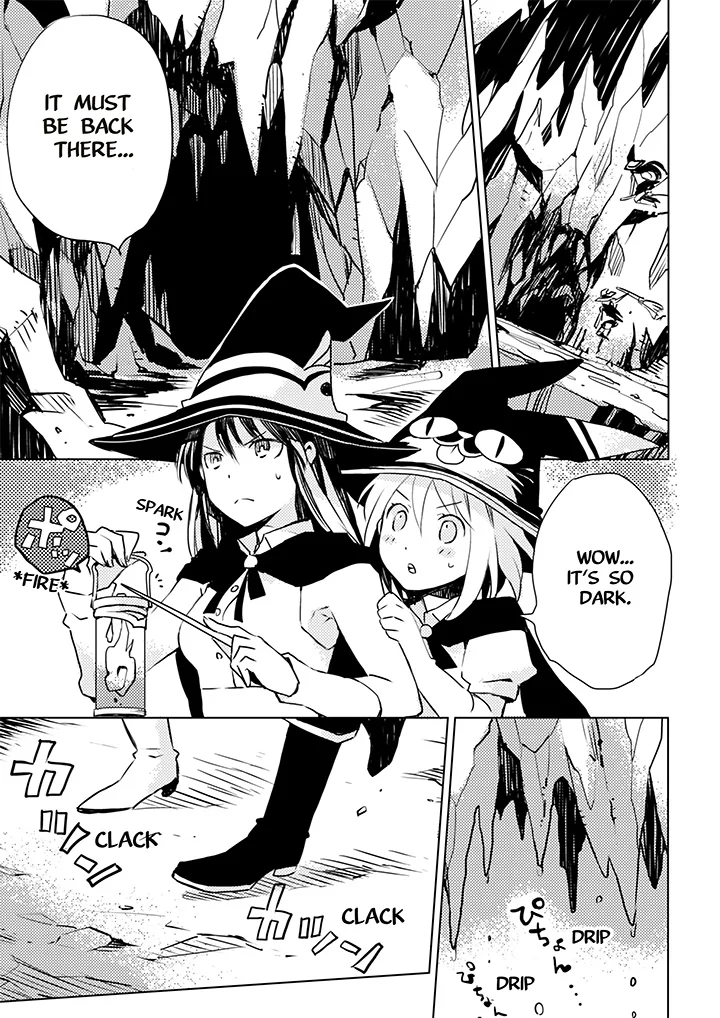
Western comic style
Western comics, originally referring to superhero comics, popularized by major comic studios such as Marvel and DC, are characterized by dynamic action scenes, generally more realistic character proportions, and bright colors.
They typically have a vibrant coloring style and employ a lot of primary colors in their design. Comics drawn in this style are often produced by multiple artists specializing in each step of the production pipeline in a team. Often, one person handles the pencil sketch, another the inking, another the coloring, and yet another, the lettering.
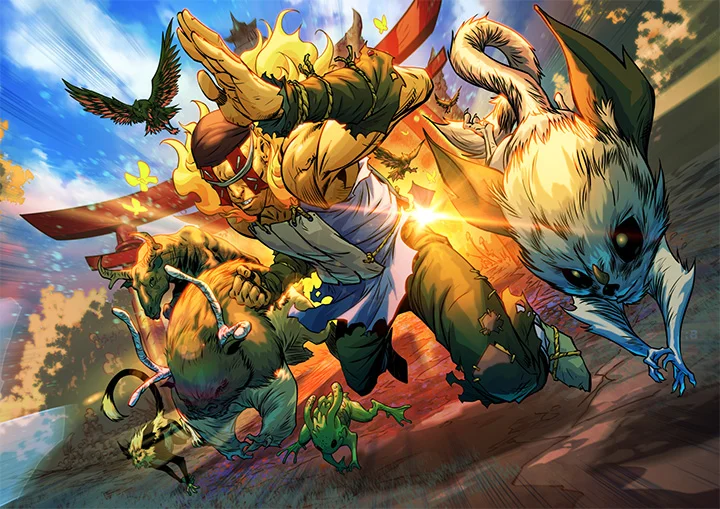
Noir
Noir comics are a subgenre of mystery/crime comics that draws inspiration from the “Noir Film”, which was originally a type of black-and-white crime drama style, with cinematic storytelling focused on the high contrast between light and shadows.
Its particular appeal is the use of negative space and silhouettes to create the dark and mysterious atmosphere of the story. In modern day graphic novels, Noir comics make use of a more muted color palette and high contrast layouts, or black and white with an accent color. The nature of the visuals lends itself to stories with a darker or more mature tone.
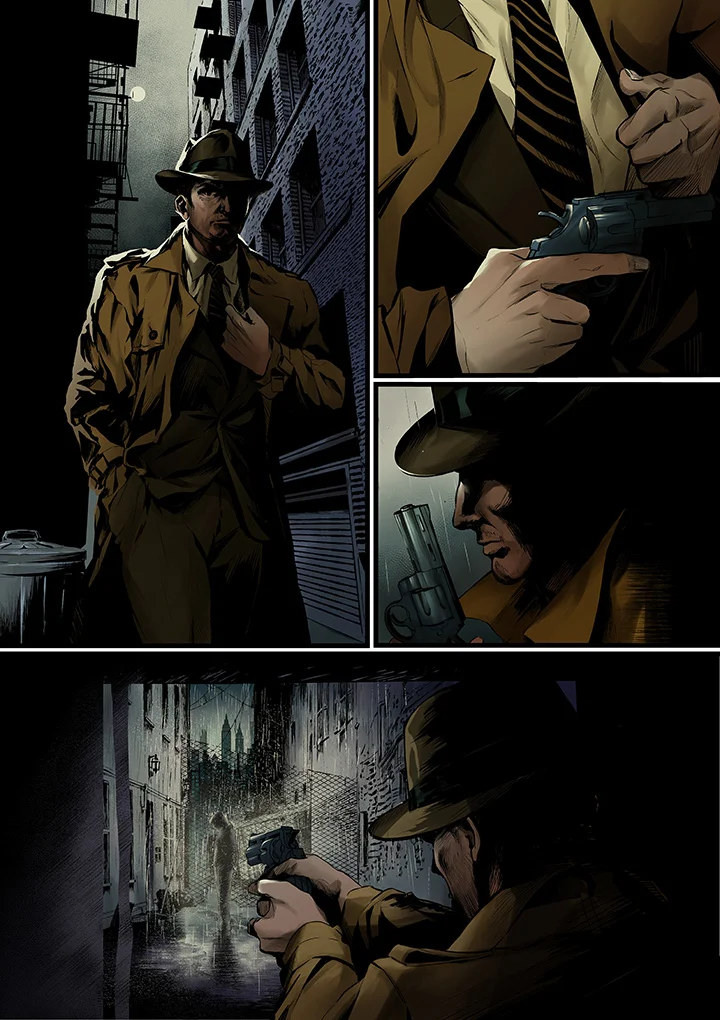
Toon style
The cartoon style is characterized by a usually extremely simplified character design, often in flat colors. Cartoon style comics tend to have less detail in the backgrounds, and are great for delivering comedic punchlines in a few panels.
Here, the jokes and stories told are more important than the drawing style. However, a consistent style helps to make these comics instantly recognizable. Paneling in cartoon style comics tends to be simple, often following a 4-panel layout.
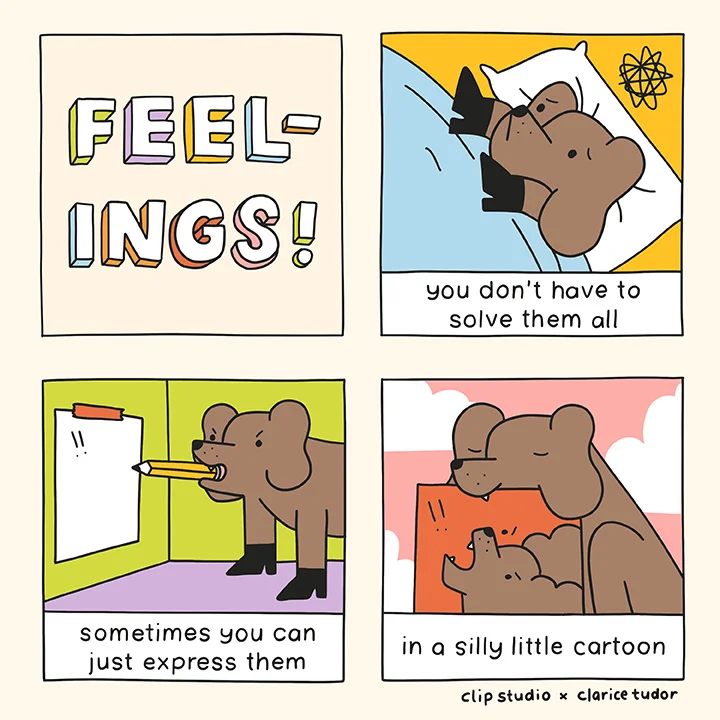
Watercolor/Illustration style
Although less common, soft watercolor art styles can also be suitable for comics and webtoons. In this case, the emphasis lies with the detailed expressions of the characters and the atmosphere that the colors aim to convey.
Panels are more fluid, often overlapping other panels or lacking panel borders altogether. This style is popular for romance, fantasy, and mystery comics, where the emotions of the character are very important for the story.
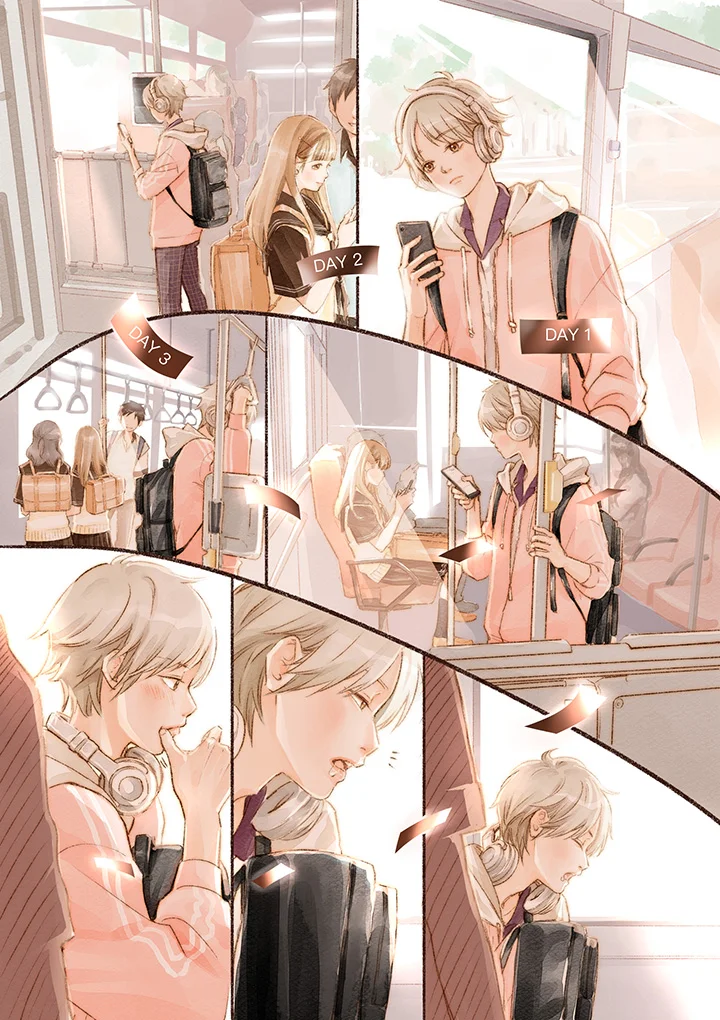
Webtoon
As well as the vertical scrolling format, there are other artistic features typical of this genre. Optimized for smartphone screens, webtoons are generally drawn in color and may feature soft romantic coloring, bold coloring for action laden stories, or anything in between.
As webtoons are generally serialized as episodes published on a frequent basis, backgrounds and design details tend to be simpler. However, characters may have great detail in important scenes. A common method for scene transitions is using gradients and patterns.
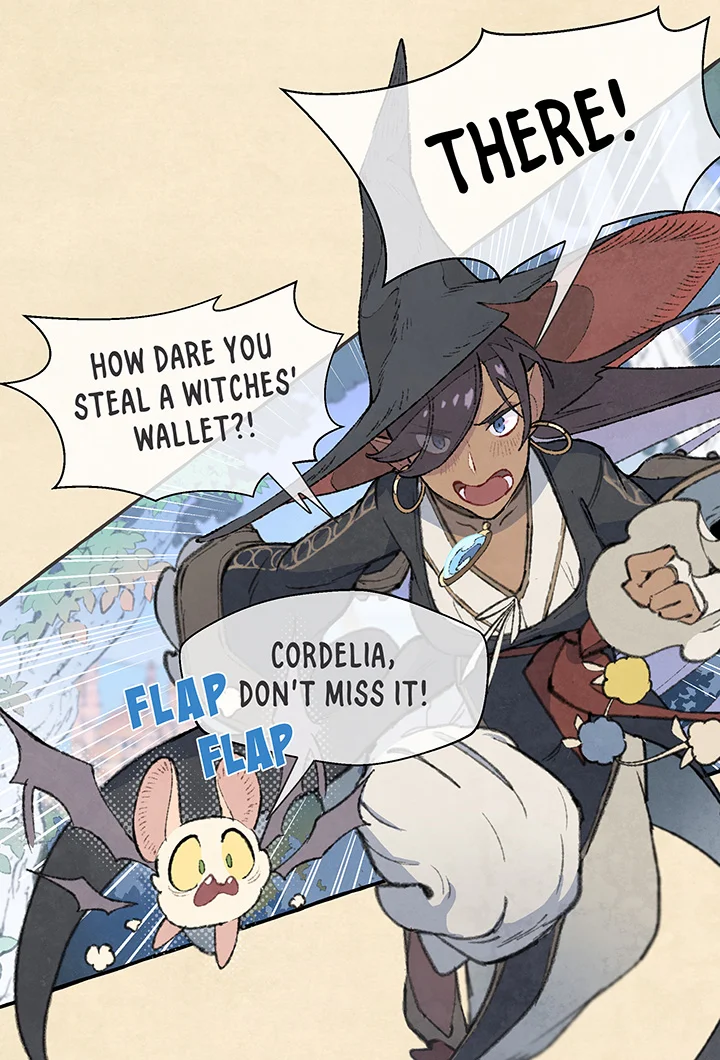
Match the art style to your story
One important aspect of deciding your comic style is to find an art style that matches the tone and genre of the story. There aren’t any fixed rules to the style your comic could have, however, there are some genre conventions that you should keep in mind in order to meet reader expectations.
For example, a romance story will rarely be drawn in a hyper realistic or dark, gritty style. Here are some elements you might want to consider.
Character design and proportions
Character design is often one of the most recognizable elements of a comic artist’s work. When designing your characters, think about which aspects of them you want to emphasize to make the reader understand who they are.
For example, a romance or comedy may have characters with exaggerated facial features to emphasize their facial expressions and feelings. An action comic may place more emphasis on unique and idealized body shapes.
Consider your approach carefully, as you will be drawing your characters the most throughout your story. See here for tips on character design.
Color palette
A unified color palette can bring unity to your overall comic. While you don’t necessarily need to limit your color palette for every scene, think about the atmosphere of your story and what colors would be appropriate. Adding a color adjustment layer with apps like Clip Studio Paint as a final step in your comic pages can help create this sense of consistency.
Realism
Realism is a technique that will take a lot of time to execute, so consider this style carefully. From detailed, more realistic proportions of superhero comics to stick figures in comic strips, you have complete freedom over this element.
Cartoonish designs can be expressive and faster to draw, while realistic designs make it easier for the reader to understand who the characters are. Think also about matching the drawing style of the backgrounds and surroundings to that of the characters.
Panel complexity and frequency
While this largely depends on the comic genre and the content of the story, you can also think about the type of paneling and framing you want to use.
The number of panels in a scene usually correlates with the speed of the storytelling: many action panels create a fast-paced exposition, while fewer larger panels can draw out a single moment. You can search for panel templates online, or download them directly to drawing apps like Clip Studio Paint.
Inking and Coloring
Not only the colors themselves, but the style of coloring greatly affects the feeling and distinctiveness of a comic. From flat colors and cel shading to heavily rendered styles, black inkwork to soft watercolors, all kinds of painting and coloring techniques can be used for comics. Think about matching the effect of the painting style to the genre of your story.
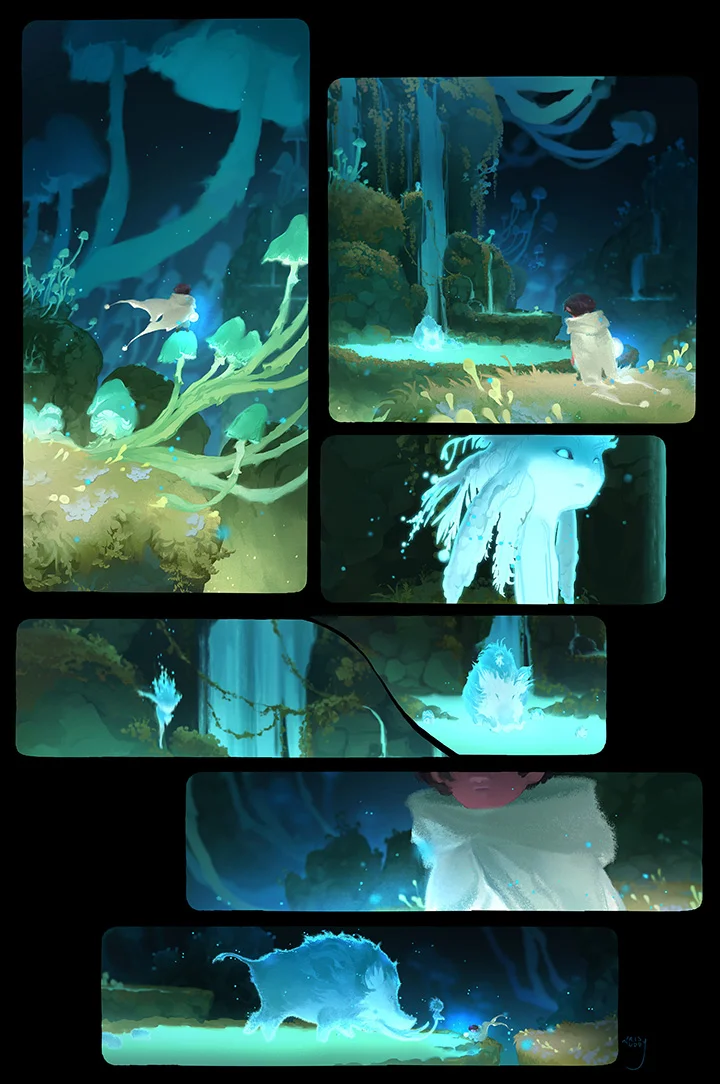
Another factor you need to consider is your intended update schedule. Many comic and webtoon artists post episodes frequently and consistently in order to build an engaged audience.
If you plan to post new episodes as you create them, on a weekly or monthly basis, you should make sure that the art style you choose is one that you feel comfortable maintaining. For example, traditional Western superhero styles typically have a lot of detail, and may not be sustainable for weekly releases if you are creating the project on your own.
Try to work out how long it takes you to create one episode before committing to an overly detailed style. If your desired style is too complex for your ideal update schedule, you can either reconsider the essential elements of the style you want to use, or rethink your publishing schedule, by creating an upload buffer through finishing multiple episodes before you start to post. A less frequent update schedule is also an option.
You can also make use of digital comic tools such as reusable materials, comic panel templates, or 3D models for backgrounds such as those in Clip Studio Paint. However, overuse of pre-made comic assets may distract from your unique style.
Try creating your own image materials for recurring patterns such as clothing, windows, plants, and so on to increase your efficiency while maintaining your own distinct style.
Experiment with new ideas
When you’re first planning your comic, it can be daunting to commit to an artistic direction that you will maintain throughout the length of your project. It’s natural that your style will evolve over time as you learn new techniques and become more comfortable while drawing.
However, you should still think carefully and experiment with various ideas before starting full production to create a workflow you can stick to over a long period of time.
Try looking at other artistic works that inspire you, from existing comics and manga to illustrations, paintings, or animations. When looking to get inspiration from other artworks, take the time to think about what aspect draws you to that style. Once you’ve identified what you like, you can try incorporating those elements into your own comic art without copying the entire style.
If you usually draw illustrations and this is your first time trying sequential art, think about what makes your current art style appealing or unique. While you may end up with a slightly more simplified approach when drawing comic pages, keeping elements of your usual style such as a favorite color palette or the way you draw your characters will make your comic recognizable and solidify your style.

Try drawing your characters in a few different ways to see which method comes most naturally to you and is sustainable over a long term. You may wish to break down your characters to their most essential elements, particularly when it comes to outfits, to reduce the workload if necessary.
Don’t forget to practice drawing some backgrounds too, so you can find a balance that works well with the design of your characters.
You can always combine different aspects of classic genres to make something completely unique to you. For example, you could combine cartoon style characters with more complex paneling and dynamic action scenes of the superhero genre. Or you could draw in a manga style with an accent color within the overall black-and-white design.
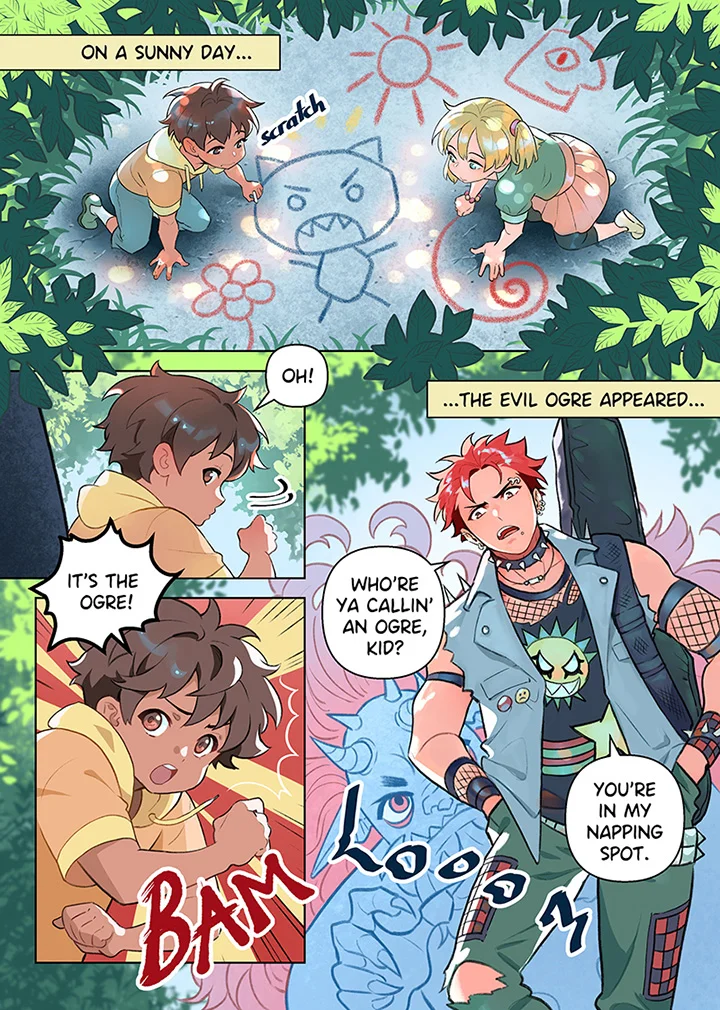
Start creating your comic
Digital art apps are a fantastic way to experiment with various styles, and finding the right one can make a big difference in your creative process.
Many beginners to creating comics find Clip Studio Paint particularly helpful because of its dedicated comic creation tools, multiple page management, and 3D assets, which make it easier to bring your comic or manga ideas to life.
Whether you're designing characters or experimenting with layouts, Clip Studio Paint offers the flexibility and support you need. Plus, you can try it for free for up to 6 months, giving you plenty of time to see how it fits your creative workflow.
What Artists Are Saying About Clip Studio
CLIP STUDIO PAINT PRO
for character art, concept art, illustration
CLIP STUDIO PAINT EX
for comics, manga, webtoons & animations
PRO
EX
Single-page illustrations & comics
Multi-page comics/manga & illustrations
Up to 24 frames for gifs or short animations
Unlimited frames for professional animation
Natural, customizable pen and brush tools
Vector layers
More than 10,000 free downloadable brushes and materials
3D models and drawing figures
PSD compatibility
RGB and CMYK compatible
For macOS and Windows
-
Export and print multi-page files
-
Convert images and 3D models into lines and dot shading
Free technical support
Free web services & community
Clip Studio Ask / Assets / Tips / Share

